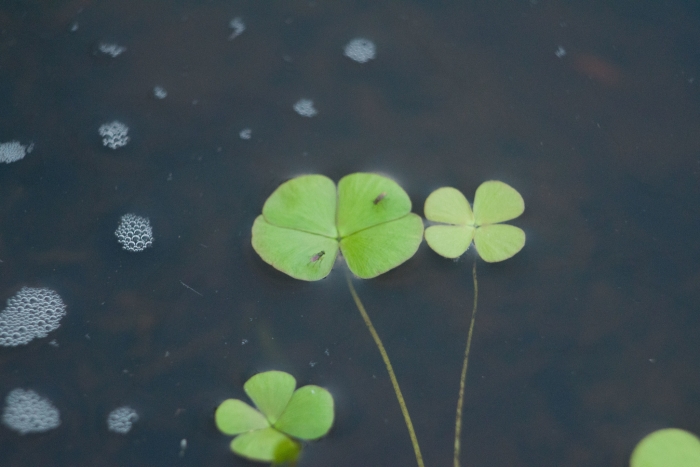ʻihiʻihi
(Marsilea villosa)
ʻihiʻihi (Marsilea villosa)
/
/

Kevin Faccenda
CC BY 4.0
Image By:
Kevin Faccenda
Recorded By:
Copyright:
CC BY 4.0
Copyright Notice:
Photo by: Kevin Faccenda | License Type: CC BY 4.0 | License URL: http://creativecommons.org/licenses/by/4.0/ | Rights Holder: Kevin Faccenda | Publisher: iNaturalist | Date Created: 2021-12-15T17:39:04-08:00 |














Estimated Native Range
Summary
Marsilea villosa, commonly known as ʻihiʻihi or villous waterclover, is a rare and endangered fern-like aquatic plant endemic to the Hawaiian Islands, specifically Oʻahu, Molokaʻi, and Niʻihau. It is adapted to low elevation dry forests and shrublands, often found in temporary pools formed by seasonal rainfall. This species is characterized by its hairy, clover-like leaves and its ability to survive periods of drought by entering a state of dormancy.
Villous waterclover is valued for its unique appearance and its adaptability to fluctuating water levels, making it an interesting specimen for water gardens and aquatic displays in regions where it is not considered invasive. It requires full sun to part shade and can tolerate a range of soil types, provided they are well-draining. In cultivation, it is important to mimic its natural wet-dry cycles to ensure its health. While Marsilea villosa is not commonly available in the horticultural trade due to its endangered status, it serves as an important genetic reservoir for research and conservation efforts. Care should be taken to prevent its spread outside of its native range due to its potential invasiveness.CC BY-SA 4.0
Villous waterclover is valued for its unique appearance and its adaptability to fluctuating water levels, making it an interesting specimen for water gardens and aquatic displays in regions where it is not considered invasive. It requires full sun to part shade and can tolerate a range of soil types, provided they are well-draining. In cultivation, it is important to mimic its natural wet-dry cycles to ensure its health. While Marsilea villosa is not commonly available in the horticultural trade due to its endangered status, it serves as an important genetic reservoir for research and conservation efforts. Care should be taken to prevent its spread outside of its native range due to its potential invasiveness.CC BY-SA 4.0
Plant Description
- Plant Type: Herb
- Height: 0.5-1 feet
- Width: 1-1.5 feet
- Growth Rate: Moderate
- Flower Color: Non-Flowering
- Flowering Season: Non-Flowering
- Leaf Retention: Deciduous
Growth Requirements
- Sun: Full Sun, Part Shade
- Water: High, Aquatic
- Drainage: Standing
Common Uses
Low Maintenance, Water Garden
Natural Habitat
Low elevation dry forests and shrublands in the Hawaiian Islands
Other Names
Common Names: Hairy Water Clover, Villous Waterclover, ‘Ihi ‘Ihi, ʻihiʻihilauākea, Hawaiian Marsilea
Scientific Names: , Marsilea villosa, Zaluzianskia villosa, Zaluzianskya villosa,
GBIF Accepted Name: